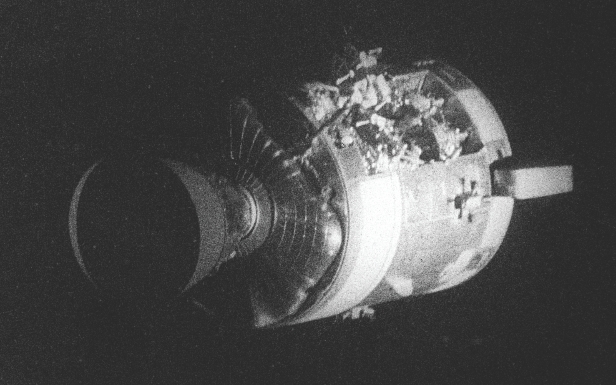
http://www.youtube.com/watch?v=kAmsi05P9Uw




On April 13, 1970, Apollo 13’s oxygen tank 2 famously ruptured, taking a piece of the cylindrical service module with it and damaging oxygen tank 1 in the process. The precious gas vented out into space and the crew was left in a crippled spacecraft with only the command module’s reentry batteries for power. Luckily, they were on their outbound journey to the Moon and were able to stretch the lunar module's consumables and use this small spacecraft as a lifeboat. The explosion was a rare combination of human error and flawed design. From the moment it was installed in Apollo 13’s service module, oxygen tank 2 was a ticking time bomb.
Oxygen tanks were installed in the Apollo service module in pairs as a shelf. The shelf that flew on Apollo 13 had originally been installed in service module 106, the spacecraft that eventually went to the Moon with Apollo 10, but was removed in October of 1968 for upgrades. The process wasn’t smooth. Technicians failed to notice one of the bolts keeping the shelf in place hadn’t been removed, and when they tried to lift the shelf out of the spacecraft it caught on the bolt and fell back into place. It bounced, possibly hitting the fuel cell installed about the oxygen shelf in the process, before settling back into its installed position.
No one gave the issue much thought, and the oxygen tank shelf was upgraded and installed in service module 109, the spacecraft assigned to Apollo 13.
During pre-flight testing, technicians ran into constant problems with oxygen tank 2. It pressurized well but didn’t depressurize smoothly. But again, no one gave the issue much thought. If the tank could hold oxygen as it was designed to do, it would provide a crew with the vital gas in flight ...









Webb wrote:Cape Canaveral was renamed Cape Kennedy in 1963 but the locals didn't like the concept of changing the name of a 400 year old landmark to that of a Massachusetts senator so they changed it back in 1973, as was Cape Canaveral Air Force Station.
The Merrit Island launch facility was permanently renamed John F. Kennedy Space Center.

Users browsing this forum: No registered users and 258 guests